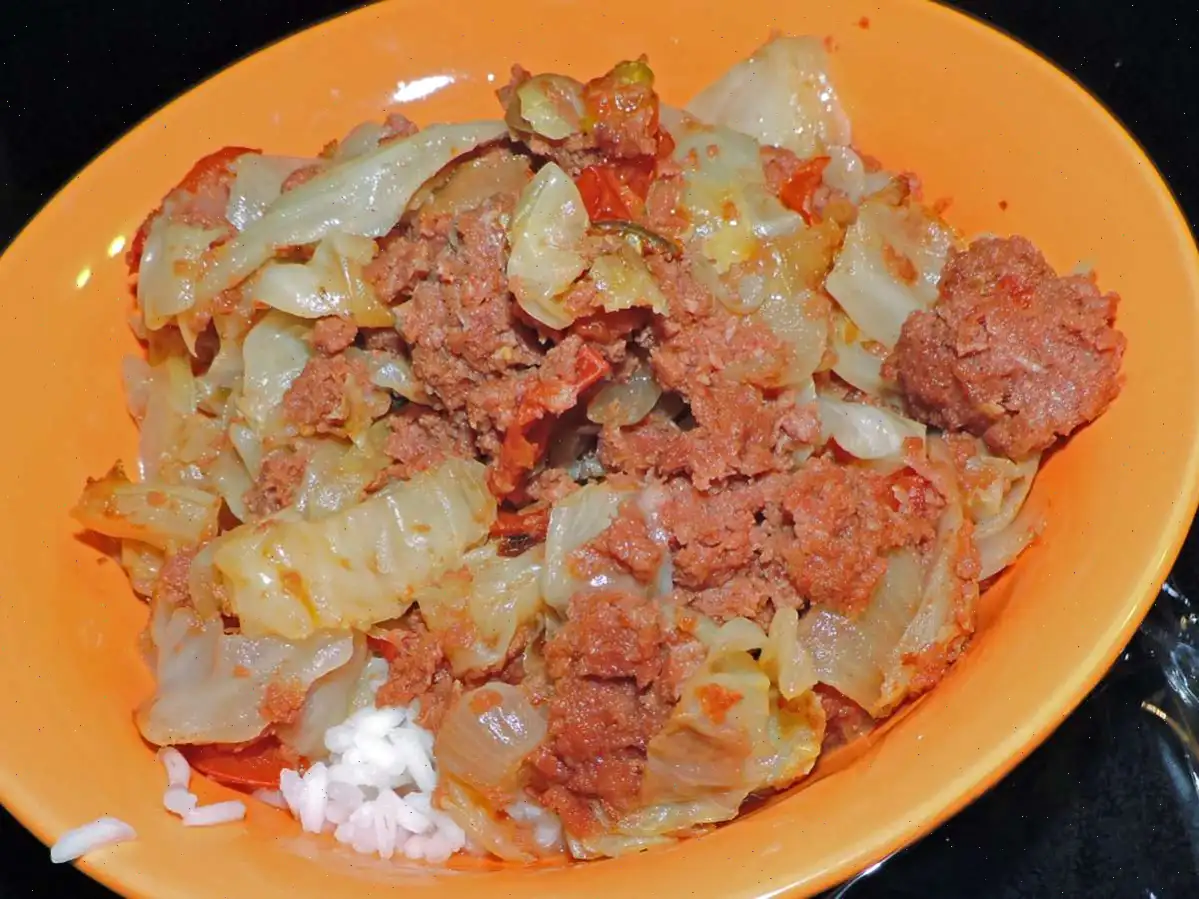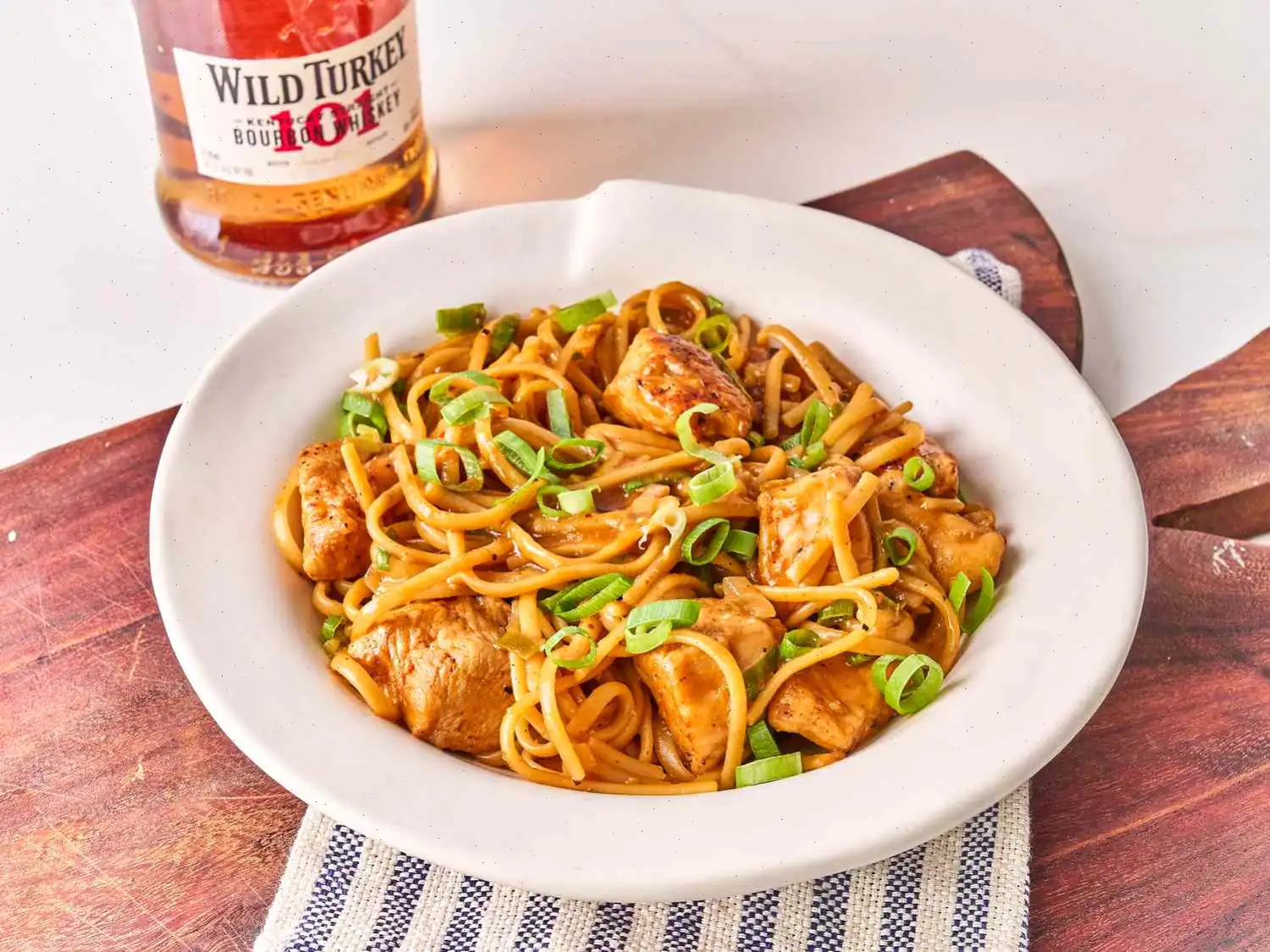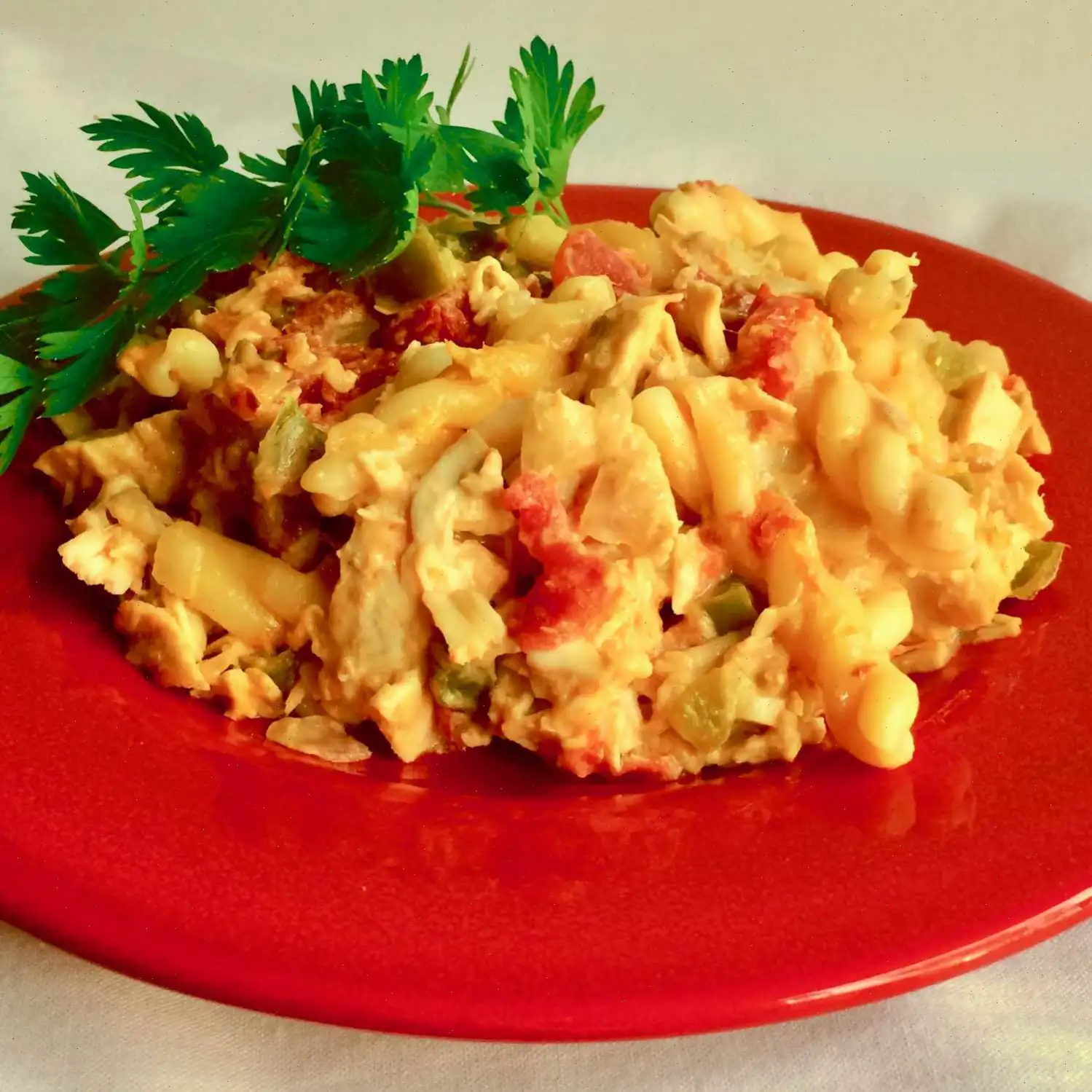
Filipino Corned Beef and Cabbage Recipe
Ingredients:
- cup butter
- 1 teaspoon olive oil
- onion, chopped
- 3 cloves garlic, minced
- 4 Roma tomatoes, cubed
- small head cabbage, cored and cut into strips
- cup chicken stock, or more to taste
- 1 (12 ounce) can corned beef
Directions:
- In a large pot, heat butter and olive oil over medium heat.
- Once the butter has melted, add the chopped onion and minced garlic. Cook for about 5 minutes, or until the onion is soft and translucent.
- Next, add the cubed Roma tomatoes and cook for an additional 3 minutes, allowing them to soften and heat through.
- Stir in the cabbage strips, and cook for about 5 minutes, or until the cabbage has softened.
- Pour in a splash of chicken stock to add moisture, and heat through for another 3 minutes.
- Finally, add the canned corned beef, stirring everything together. Continue cooking for about 10 minutes until the corned beef is heated through and the flavors have combined.
Nutrition Facts (per serving):
| Calories | 398 |
| Total Fat | 29g (38%) |
| Saturated Fat | 15g (76%) |
| Cholesterol | 113mg (38%) |
| Sodium | 1012mg (44%) |
| Total Carbohydrate | 9g (3%) |
| Dietary Fiber | 3g (10%) |
| Total Sugars | 5g |
| Protein | 25g (49%) |
| Vitamin C | 33mg (36%) |
| Calcium | 56mg (4%) |
| Iron | 2mg (13%) |
| Potassium | 418mg (9%) |
Note: Percent Daily Values are based on a 2,000 calorie diet. Your daily values may vary depending on your calorie needs.

This Filipino version of corned beef and cabbage is a simple, flavorful dish that puts an Asian spin on the classic Irish combination of corned beef and cabbage. It's an easy-to-make meal, perfect for family dinners, and offers a taste of Filipino comfort food that showcases the country's love for savory, hearty dishes.
History of the Dish
Filipino Corned Beef and Cabbage is a popular home-cooked dish influenced by the culinary traditions brought to the Philippines by Spanish colonization. While corned beef itself is not native to the Philippines, it became a staple due to its convenience and long shelf life, especially during times when fresh meat was less accessible. The cabbage in this dish is reminiscent of traditional Irish recipes, which Filipinos adapted and modified over time. The use of tomatoes, garlic, and soy sauce in the Filipino version adds a distinctive local flavor that sets it apart from its Western counterparts.
Regional Variations
As with many Filipino dishes, regional variations of Corned Beef and Cabbage exist. In some provinces, such as Batangas, the dish might feature a richer sauce or a bit of chili to add heat. In Manila, people may opt for a more minimalist preparation, focusing on the tender texture of the corned beef and cabbage, while in Visayas, the dish might be served alongside other types of vegetables or starches, such as rice or potatoes. Despite these variations, the central componentscorned beef and cabbageremain the same, making it a unifying dish across the archipelago.
What Sets It Apart from Similar Dishes?
Filipino Corned Beef and Cabbage stands out from similar dishes, particularly the classic American version of corned beef hash. While American corned beef hash typically involves diced potatoes and onions sauted with corned beef, the Filipino variation replaces potatoes with cabbage, adding a light crunch and a distinct flavor. The use of soy sauce and garlic in the Filipino recipe is another distinguishing factor, as these ingredients are not typically found in Western preparations of corned beef. Additionally, the dish is often served over rice in Filipino households, offering a more filling and satisfying meal.
Where Is It Typically Served?
In the Philippines, Corned Beef and Cabbage is often served as a quick and satisfying dinner, especially on weekdays when time is limited. It's also commonly prepared for casual family gatherings, where it's enjoyed alongside steamed white rice. The dish is a favorite comfort food and is especially popular in urban areas like Manila, where convenience and simplicity are valued in daily meals. It is also commonly found in Filipino homes overseas, where the dish provides a taste of home for the Filipino diaspora.
Interesting Facts
- The Philippines is known for its creativity when it comes to adapting foreign dishes, and Filipino Corned Beef and Cabbage is a prime example of how Filipino cuisine takes inspiration from global flavors.
- In some parts of the Philippines, corned beef is considered a "luxury" food item and is reserved for special occasions or as a quick fix for busy households.
- Filipinos often serve corned beef with a dash of vinegar or a splash of soy sauce for added tang, making it more flavorful and suited to local taste preferences.
- In recent years, Filipino Corned Beef and Cabbage has gained popularity in international Filipino restaurants, particularly in the United States, as part of a broader effort to introduce Filipino flavors to a global audience.
FAQ about Filipino Corned Beef and Cabbage Recipe
Comments
Brenda White
03/19/2025 12:21:57 AM
Delicious! This corned beef recipe is a delightful departure from my typical preparation with just onions and garlic.








